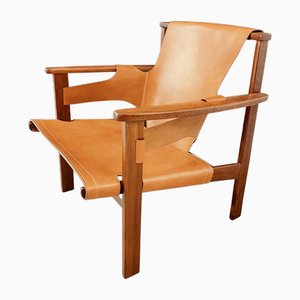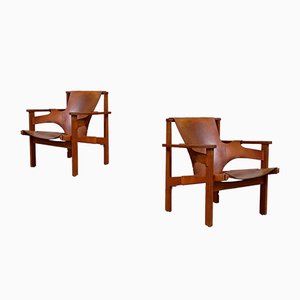
Carl-Axel Acking (1910-2001) was a prominent architect, interior and industrial designer, who was particularly active during the 1940s and 1950s. He is remembered for his important contribution to modernist architecture and design in Sweden.
Acking was born in 1910 in Helsingborg, Sweden. From 1931 to 1934, he studied at the National College of Art in Stockholm, then at the Art School and the Royal Institute of Technology in Stockholm, graduating in 1939. During the 1930s, Acking assisted architect Gunnar Asplund (1885-1940) with design of Gothenburg Town Hall. In 1939, he co-founded an architect's firm with Sven Hesselgren (1907-1993). They worked together until 1955.
Acking’s furniture design consisted primarily of seating and storage pieces. His most famous designs include the Anette dressing table (1943) for Nordiska Kompaniet (NK); the Bentwood Chair (1944) for —a chair assembled from just ten pieces which Acking hoped would be both practical for a modern family and suitable for mass production; the Trienna Chair (1957) for NK—named after Milan’s Triennale, where the chair was exhibited; and the Tokyo Chair (1959)—originally designed for the Swedish Embassy in Tokyo. Over the course of his career, Acking also tried his hand at designing cabinets, textiles, and lighting.
Acking’s architectural designs spanned public and residential buildings. His most notable designs include, Siris Chapel in Torsby (1950); H55 Pavilions in Helsingborg (1955; Acking was one of three main architects)—which consists of three pavilions built for the exhibition and perhaps his most well-known architectural work; Hässelby Family Hotel in Stockholm (1955), Quality Hotel in Ostersund (1956), Skånska Bank in Malmö (1965) and Birgitta Church in Skön (1972).
Acking held several esteemed professorships throughout his career at the National College of Art in Stockholm (1945-1957), the Institute of Technology in Stockholm (1957 onwards), and The School of Architecture at Lund University (1964-1976). He was also a member of many prominent associations such as the Swedish Architects Association (SAR), the Swedish Interior Architects Association (SIR), and Svensk Form (Swedish Society of Crafts and Design).
His designs can be found in the National Museum in Stockholm, the Nordic Museum in Stockholm and the Harvard University Museum in Massachusetts.
Acking was the winner of the prestigious Lunning Prize in 1952. He passed away in 2001.



